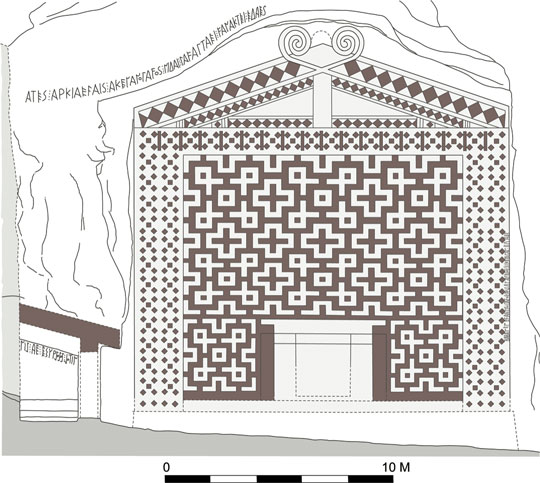Midas in History & Legend

The most reliable information about the famous Phrygian king Midas comes from the contemporary records of the Assyrian king Sargon between 717 and 709 BCE. For most of that time, Midas posed a threat to Sargon by intriguing with restive western satellite kingdoms of the Assyrian empire. After an Assyrian governor launched an invasion of Phrygia, Midas ceased his subversive activities and himself sent tribute. An undated Assyrian text commending Midas’ help in nipping an anti-Assyrian diplomatic initiative probably belongs to the period following that settlement. Some of the texts imply that Midas had already begun his reign before Sargon’s own accession in 721.

His death must have come at some time in the late eighth or early seventh century.
Greek and Roman sources often mention Midas. In the mid-fifth century BCE the historian Herodotos saw a throne at the great sanctuary of Apollo at Delphi that he says was a votive gift from Midas, a report presumably based on traditions at the sanctuary. A furniture fragment in Anatolian style found at the site may be part of the throne. Another very personal tie between Midas and the Greeks was reported in the fourth century BCE by Aristotle, who says that Midas married the daughter of the ruler of the Greek city of Kyme on the west coast of Asia Minor.
The Classical writers continually associated Midas with great wealth, beginning with the Spartan poet Tyrtaios in the mid-seventh century BCE, no more than two or three generations after Midas’ death. A fantastic variant on that theme is the story of the golden touch, which was already circulating by the fourth century. An indication that there was, in fact, considerable wealth in his kingdom comes from a recently excavated Phrygian tumulus burial at Elmalı, which is rich in silver objects and dates to around the time of his reign. The Great Tumulus at Gordion (Tumulus MM), which was often thought to have been the burial place of Midas, and which contains bronze objects of the sort that at Elmalı are silver, now seems on the basis of dendrochronology to predate his death considerably.
As the centuries advanced, remarkable stories about Midas entered the Classical tradition. By the sixth century BCE he was credited with capturing a satyr by lacing a spring with wine. Starting apparently in the fifth century, claims arose that he had donkey’s ears. Even stories about his death were fantastic. In the earliest one attested (fourth century BCE), he starved because the golden touch rendered all his food inedible. By the time of the early Roman Empire, he had managed in the Augustan poet Ovid’s tale to wash away the touch before it became fatal, but he was widely believed by then to have committed suicide by drinking bull’s blood. Some sources report it without further commentary. Plutarch (ca. 100 CE) said his suicide was related to nightmares, while Strabo linked it to a Kimmerian invasion of Phrygia.
Further reading
- Huxley, G. L. 1959. “Titles of Midas,” Greek, Roman, and Byzantine Studies 2, pp. 83-99.
- Vassileva, M. 1997. “King Midas. Between the Balkans and Asia Minor,” Dialogues d’histoire ancienne 23.2, pp. 9-20.

